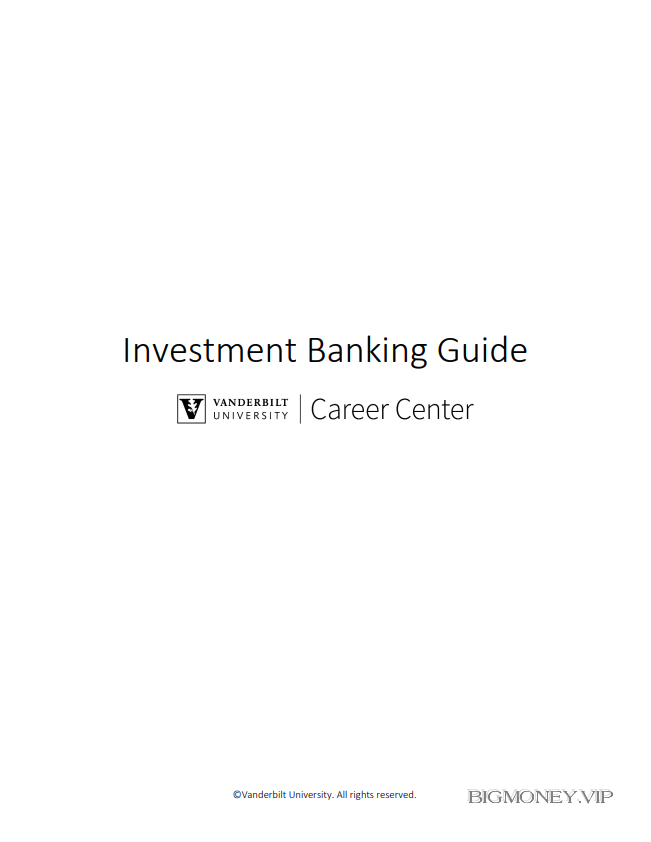Investment Banking Guide

1 Introduction
This is a one-stop-shop guide that covers the ins-and-outs of the Investment Banking
recruiting process. Read it through once to get familiar with the entire process, then feel
free to keep it as a reference.
2 Investment Banking in a Nutshell
2.1 What is Investment Banking
Street of Walls (2019) explains that, investment banks perform two basic, critical functions. First,
investment banks act as intermediaries between those entities that demand capital (e.g.
corporations) and those that supply it (e.g. investors). This process is mainly facilitated through
debt and equity offerings by companies. Second, investment banks advise corporations on
mergers, acquisitions, restructurings, and other major corporate actions. While the majority of
investment banks perform these two functions, it is important to know which products and services
each bank specializes in (Street of Walls, 2019).
2.2 Core Activities at Investment Banks
Corporate Finance Institute (2020) describes how an investment bank is comprised of four main
areas: investment banking division (IBD), sales and trading (S&T), Equity Research, and Asset
Management.
Large global banks will typically offer all three services, whereas smaller banks usually focus more
on the investment banking division side covering advisory and mergers and acquisitions
(Questrom School of Business, 2019).
1. Corporate Finance (this function is most commonly referred to as “Investment Banking”):
Assist corporations in raising capital through debt and equity capital markets, and provide
advisory services on mergers and acquisitions (M&A) and other corporate transactions
(Street of Walls, 2013).
2. Sales and Trading: Buy and sell securities and other financial instruments as an
intermediary on behalf of its clients (Street of Walls, 2013).
3. Equity Research: Provide detailed company and industry research reports and make
recommendations on whether to buy, sell, or hold public securities (Street of Walls, 2013)..
4. Asset Management: Provide equity, fixed income, money market, and alternative
investment products and services to individual and institutional clients (Street of Walls,
2013).
-> Go to Appendix for more detail
2.3 Investment Banking Group Structure
Wall Street Oasis (2019) describes how the investment banking division is split into two sectors:
products and industries. The purpose of both is to provide advisory on transactions, mergers and
acquisitions and to arrange (and occasionally even provide) financing for these transactions. Each
group handles its own client accounts, and is responsible for a designated product or industry
sector (Wall Street Oasis, 2019).
Product groups: Differentiated by what types of services or financial products the
groups provide. Typical groups include Mergers and Acquisitions (M&A), Leveraged
Finance (Lev Fin), Equity Capital Markets (ECM), Debt Capital Markets (DCM) and
Restructuring. These groups focus only on their specific products and can work across all
industry groups. They generally work and collaborate with industry groups on the more
intricate and specialized needs of a client towards the end of a deal process (Street of
Walls, 2013).
Industry/Coverage groups: Differentiated by what types of clients the groups serve.
Typical groups include Healthcare, Technology, Media, Telecom (TMT), Financial
Institutions Group (FIG), Natural Resources, Consumer & Retail (C&R), Industrials, Real
Estate, Gaming and Lodging, and Financial Sponsors. Industry groups cover all
companies in a specified industry, but have exposure to a variety of products including
debt, equity, and M&A (Street of Walls, 2013).
o Financial Sponsors is a unique coverage group as it does not cover a specified
industry but instead serves only Private Equity firms. Private Equity firms may own




